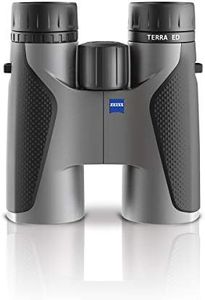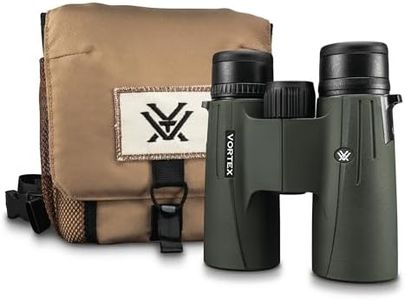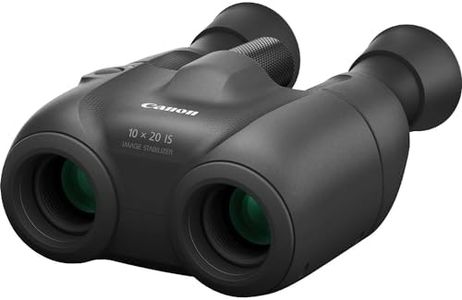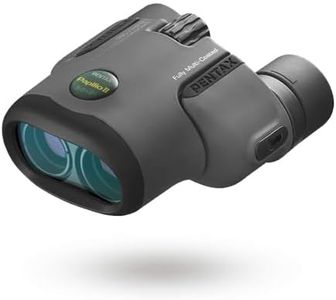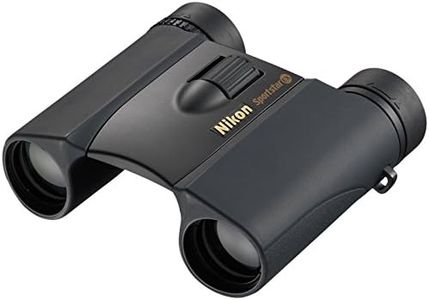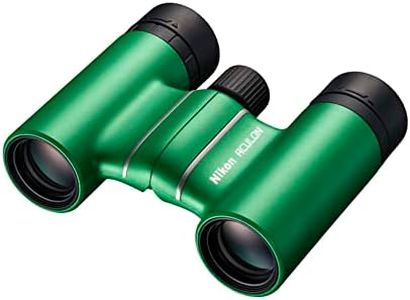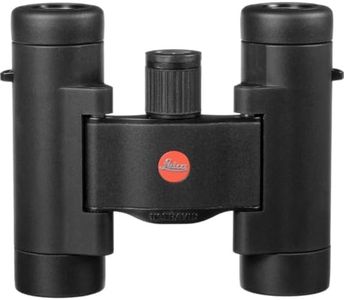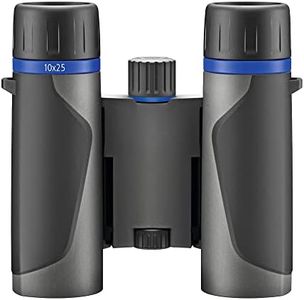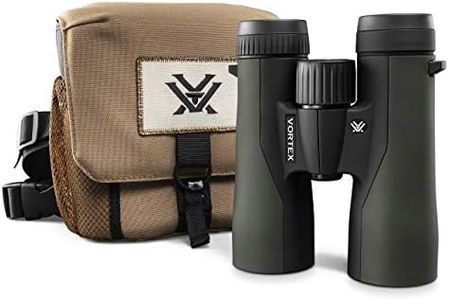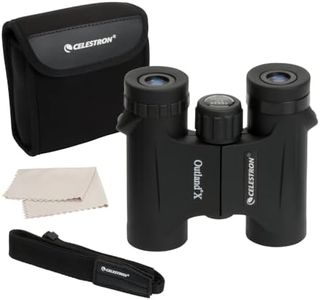We Use CookiesWe use cookies to enhance the security, performance,
functionality and for analytical and promotional activities. By continuing to browse this site you
are agreeing to our privacy policy
10 Best Pocket Binoculars
From leading brands and best sellers available on the web.By clicking on a link to a third party's website, log data is shared with that third party.
Buying Guide for the Best Pocket Binoculars
Pocket binoculars are a fantastic choice if you want a compact and portable way to enjoy distant views, whether you're hiking, sightseeing, attending sports events, or simply exploring nature. When choosing the right pocket binoculars, it's important to look past the size and price tag and focus on key specifications that can impact your viewing experience. Understanding these specs makes it much easier to pick a pair that matches your personal needs and gives you the clearest, most comfortable view.MagnificationMagnification is expressed as the first number in binocular descriptions, like 8x or 10x. It tells you how many times closer objects appear compared to your naked eye. Smaller magnification values (such as 6x–8x) provide a wider field of view and steadier images, making them easier to use for general purposes like birdwatching or sporting events. Higher magnification (such as 10x–12x) brings objects even closer but can make the image shakier and can be harder to keep stable, especially without a tripod. To pick the right one, think about how steady your hands are and whether you prefer seeing a wider scene or getting as close as possible—most casual users are happy with 8x for its comfort and balance.
Objective Lens DiameterThe objective lens diameter is the second number in a binocular description (e.g., 8x25, where 25mm is the lens size). This measures how much light the binoculars let in—the larger the lens, the brighter the image, especially in low light. For pocket models, lens sizes typically range from 20mm to 28mm. Smaller lenses make for lighter, more compact binoculars but can look dimmer in dusk or shady conditions. If you plan to use your binoculars mostly in broad daylight, a smaller objective is fine. But if you want them for dawn or dusk use (like wildlife watching), consider the largest lens your pocket can comfortably fit.
Field of ViewField of view describes the width of the area you can see through the binoculars, usually measured in meters at 1,000 meters or as an angle in degrees. Wider fields make it easier to spot and follow moving objects (like birds), while narrower fields are more zoomed in. Pocket binoculars with lower magnification tend to have wider views. If you want to track action or scan landscapes, choose a model with a broader field of view. If your main goal is to look closely at a specific target, a narrower field is less of a drawback.
Weight and SizeOne of the main points of pocket binoculars is portability—the lighter and smaller, the easier to carry on hikes or trips. Most pocket binoculars are under 350 grams and can fold to fit into coat pockets or small bags. However, very small or light binoculars might sacrifice comfort or stability. When choosing, think about how you'll carry them and how long you'll use them at a time. If you walk long distances or need to minimize your bag’s weight, opt for the lightest pair that still feels sturdy when you hold them.
Eye ReliefEye relief is the distance your eyes can be from the eyepieces and still see the full field of view. It’s especially important if you wear glasses. Longer eye relief (typically above 14mm) is more comfortable and helps you see the entire image without straining. If you wear glasses, look for longer eye relief and adjustable eyecups, so you don't miss any of the view.
Prism TypePocket binoculars use either roof or Porro prisms to direct light through the device. Roof prism binoculars are more common in compact models—they have a straight, slim design and are easier to carry. Porro prisms are a bit bulkier but can offer a slightly wider field of view at the same size. For most users, roof prism models are more practical because of their slimness, especially when traveling light.
Water and Dust ResistanceWeather resistance means your binoculars can handle rain, splashes, or dusty conditions without damage. This is usually marked as waterproof or water-resistant and sometimes fog proof, which helps in changing climates or when going from cold to hot areas. If you’ll use your binoculars outdoors in unpredictable conditions, prioritize weatherproof features for longer-lasting use and peace of mind.
Focusing MechanismThe focusing system lets you adjust for the sharpest view. Most pocket binoculars have a central focusing wheel, often combined with an adjustable eyepiece (diopter). Consider models with a smooth, easy-to-operate focus wheel, especially if you want to quickly shift between subjects. If you often observe fast-moving or unpredictable targets, quick and comfortable focusing will be a big advantage.
